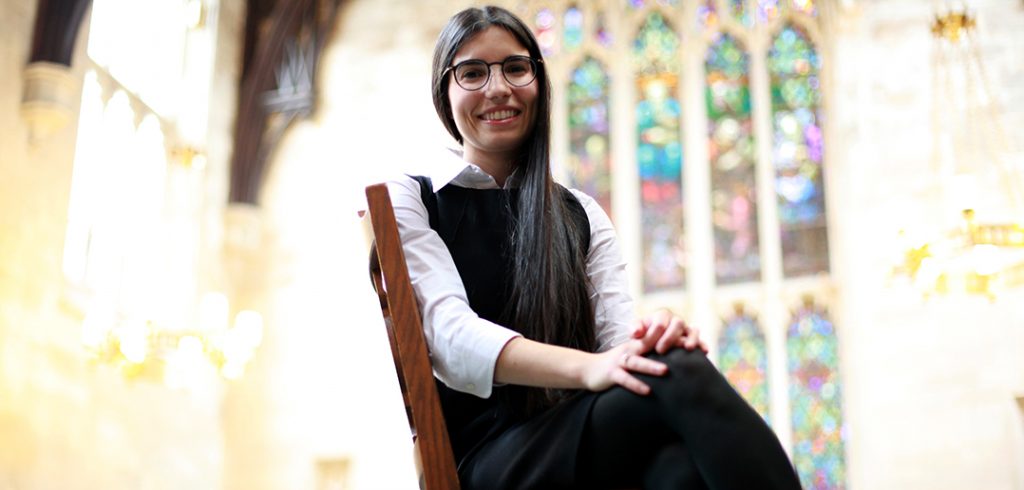But it’s just the sort of portrayal found in the Toledot Yeshu texts, Jewish narratives from the medieval and early modern periods that tell the story of Jesus’ life with a Jewish—and anti-Christian—twist.
Sarit Kattan Gribetz, Ph.D., an assistant professor of theology, is researching these stories and believes that doing so can help foster interfaith dialogue and understanding. She said that, given the hostile climate in which Jews lived during the medieval period, the stories represent a textual response from a community frequently under physical or ideological threat.
“It’s often difficult to look at the histories of our traditions and identify where our narratives may have been offensive to others, but I think it’s important to acknowledge that such difficult moments existed in order to work toward more meaningful understanding and cooperation between Jews, Christians, and Muslims,” she said.
Some of the stories found in Toledot Yeshu don’t appear in the New Testament but do appear in Christian infancy gospels and the Qur’an, she said. One tale, for example, features a young Jesus transforming clay figures of birds into living creatures.
“Those who composed these editions of Toledot Yeshu don’t deny these miracles, rather they present them as an illicit form of magic,” said Kattan Gribetz. “Miracles are part of the way medieval Jews and Christians experienced and thought of the world. But the way that Jews refuted them was to say that Jesus’ miracles were the wrong kind of magic.”
In the texts, Jesus’ miracles take on a sinister twist, with the young prophet stealing the Tetragrammaton, the name of God, from the Jewish temple. He then cuts his thigh open, inserts the name into his wound, and escapes from the temple undetected. It is the Tetragrammaton, the text claims, that allows him to perform the illicit magic.
“In Toledot Yeshu, Jesus animates the birds on the Sabbath, so he’s also violating the holy day, another critique of his behavior,” she said.
Similarly, in some versions of Toledot Yeshu, Judas likewise steals the name of God and then challenges Jesus to an aerial battle. The two fly up into the sky and try to outdo one another’s magical abilities.
By the eighth or ninth centuries, the earliest versions of Toledot Yeshu had become a comprehensive story of Jesus’ life from birth to death, said Kattan Gribetz.
“It draws, as folklore often does, on traditions and ideas circulated orally and in written form in communities,” she said. “No one knows exactly where the earliest versions of the stories were written, or by whom.”
The texts of Toledot Yeshu, written at first in Aramaic and Hebrew, were translated into Latin, German, Judeo-Arabic, Judeo-Persian, and Yiddish. Some of the latest manuscripts resemble long-form novellas.
“They served different functions in each case that they were written and told,” she said. “But one of the reasons, in my opinion, is that Jews were attracted to Christianity, and retelling these stories was an effective strategy to convince Jews not to convert to the Christian faith.”
As a scholar of religion, Kattan Gribetz said she approaches the text more as a historian than as a theologian. Although she recognizes that her work can be controversial, she remains steadfast that it’s work that needs to be done.
“It’s not uncontroversial to write about a text that doesn’t portray Jews in the most positive light, poking fun at the beliefs of their Christian neighbors,” she said. “But a deeper historical perspective, one that takes into account both uplifting and challenging moments of religious diversity and conflict, is necessary if we are to work towards creating a more religiously tolerant society.”


